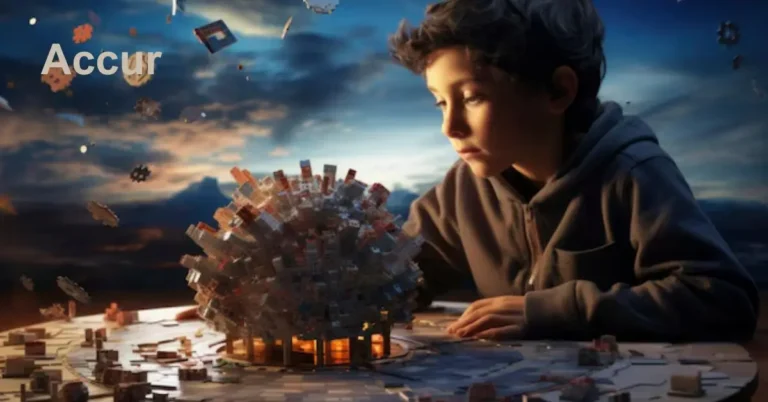Mamgat-oto is more than just a word; it’s a tradition, a cultural phenomenon, and a way of life for many. This ancient practice, rooted in history and tradition, has evolved over time, adapting to the changes in society while maintaining its core essence.
Why is Mamgatoto Relevant
In today’s fast-paced world, traditions like Mamgat-oto offer a link to our past and a guide for the future. Understanding Mam-gatoto can provide valuable insights into cultural preservation, social cohesion, and even modern-day practices.
1.3 Overview of the Article
In this article, we will delve into the origins, practices, and significance of Mamgatoto. We’ll explore its impact on society, its role in modern culture, and the challenges it faces today. Additionally, we’ll discuss future prospects and practical applications of Mamgatoto.
2. The Origins of Mamgatoto
2.1 Historical Background
Mamgatoto has deep roots in history, tracing back to ancient times. Its origins are intertwined with the cultural and spiritual practices of early civilizations, where it played a crucial role in community bonding and spiritual guidance.
2.2 Cultural Significance
The cultural significance of Mam-gatoto cannot be overstated. It has been a source of identity, unity, and continuity for many communities. The rituals, symbols, and practices associated with Mam-gatoto are deeply embedded in the cultural fabric of these societies.
2.3 Evolution Over Time
Over the centuries, Mamgat-oto has evolved, influenced by various social, political, and economic changes. While the core principles have remained intact, the way Mamg-atoto is practiced has adapted to the times, reflecting the dynamic nature of culture.
3. Understanding Mamgatoto
3.1 Key Components of Mamgatoto
Mamg-atoto is composed of several key components, including rituals, symbols, and community participation. These elements work together to create a holistic experience that is both spiritual and communal.
3.2 How Mamgatoto is Practiced
The practice of Mamgatoto varies from one community to another, but common threads run through all traditions. These practices often involve ceremonies, storytelling, and communal gatherings, all aimed at reinforcing social bonds and cultural values.
3.3 Common Misconceptions
There are several misconceptions surrounding Mamgatoto, often stemming from a lack of understanding or cultural context. It’s important to address these misconceptions to appreciate the true value and meaning of Mamgatoto.
4. The Impact of Mamgatoto on Society
4.1 Social Influence
Mamgatoto has a profound social impact, fostering a sense of belonging and continuity among its practitioners. It serves as a bridge between generations, passing down wisdom and values from one to the next.
4.2 Economic Impact
Beyond its social influence, Mamgatoto also has economic implications. It can contribute to local economies through cultural tourism, craft markets, and other economic activities linked to the tradition.
4.3 Environmental Considerations
Mamgatoto is often practiced with a deep respect for nature, reflecting an understanding of the interconnectedness of all life. This environmental consciousness is a key aspect of the tradition, emphasizing sustainability and stewardship of the earth.
5. The Role of Mamgatoto in Modern Culture
5.1 Mamgatoto in Pop Culture
In recent years, Mamgatoto has found its way into popular culture, influencing art, music, and even fashion. This resurgence has helped to keep the tradition alive, especially among younger generations.
5.2 Mamgatoto in Media
Media portrayal of Mamgatoto has played a significant role in shaping public perception. Documentaries, films, and literature have all contributed to a greater awareness and appreciation of this ancient tradition.
5.3 Current Trends
Today, Mamgatoto is experiencing a revival, with many people rediscovering its value in a modern context. This trend reflects a broader movement towards cultural preservation and the reclaiming of traditional knowledge.
6. Challenges Facing Mamgatoto
6.1 Preservation Efforts
One of the biggest challenges facing Mamgatoto is the need for preservation. As the world changes, so too does the environment in which traditions like Mamgatoto are practiced. Efforts to document and preserve these practices are crucial.
6.2 Adaptation in the Modern World
Adapting Mamgatoto to the modern world is another challenge. While it’s important to preserve traditional practices, it’s also necessary to find ways to make them relevant to contemporary life.
6.3 Criticisms and Controversies
Like any tradition, Mamgatoto is not without its critics. Some argue that it should evolve more rapidly to keep pace with societal changes, while others believe it should remain untouched. These debates are an important part of the ongoing dialogue about cultural preservation.
7. Case Studies: Mamgatoto in Action
7.1 Successful Implementations
There are numerous examples of successful Mamgatoto practices around the world. These case studies highlight the adaptability and resilience of the tradition, showing how it can thrive in different contexts.
7.2 Lessons Learned
From these case studies, valuable lessons can be learned about how to preserve and promote Mamgatoto. These insights can be applied to other cultural traditions facing similar challenges.
7.3 Expert Insights
Experts in the field of cultural preservation have much to say about Mamgatoto. Their insights provide a deeper understanding of the tradition and its place in the modern world.
8. Future Prospects of Mamgatoto
8.1 Emerging Trends
As Mamgatoto continues to evolve, new trends are emerging. These trends reflect the changing needs and interests of those who practice Mamgatoto, as well as broader cultural shifts.
8.2 Innovations in Mamgatoto
Innovation is key to the survival of any tradition. In the case of Mamgatoto, new approaches and ideas are helping to keep the tradition relevant and vibrant.
8.3 Predictions for the Future
Looking ahead, the future of Mamgatoto seems bright. With continued interest and support, this ancient tradition is likely to remain a vital part of cultural life for many years to come.
9. Practical Applications of Mamgatoto
9.1 How to Incorporate Mamgatoto into Daily Life
Incorporating Mamgatoto into daily life can be a rewarding experience. Whether through rituals, storytelling, or community involvement, there are many ways to embrace this tradition.
9.2 Benefits of Practicing Mamgatoto
The benefits of practicing Mamgatoto are numerous, ranging from enhanced social connections to a deeper sense of cultural identity. These benefits are a testament to the enduring value of this ancient tradition.
9.3 Tips for Beginners
For those new to Mamgatoto, starting can be as simple as participating in a community event or learning about the tradition through books or documentaries. These tips can help beginners get started on their Mamgatoto journey.
10. Conclusion
10.1 Summary of Key Points
Mamgatoto is a tradition rich in history and cultural significance. Its continued relevance in modern society speaks to its adaptability and enduring value.
10.2 Final Thoughts
As we move forward, it’s important to remember the lessons of Mamgatoto. This tradition offers us a link to the past and a guide for the future, reminding us of the importance of community, continuity, and cultural preservation.
10.3 Call to Action
Whether you’re new to Mamgatoto or a long-time practitioner, there’s always more to learn and experience. I encourage you to explore this tradition further and consider how it can enrich your life.
11. Frequently Asked Questions (FAQs)
11.1 What is Mamgatoto and where did it originate?
Mamgatoto is an ancient tradition with deep cultural and spiritual roots. It originated in early civilizations and has been passed down through generations, adapting to the changes in society while maintaining its core essence.
11.2 How can Mamgatoto be applied in modern life?
Mamgatoto can be applied in modern life through rituals, community involvement, and a focus on cultural preservation. Its principles of social cohesion and respect for tradition can offer valuable insights for contemporary society.
11.3 What are the challenges facing Mamgatoto today?
The challenges facing Mamgatoto today include the need for preservation, adaptation to modern life, and addressing criticisms and controversies. Efforts to document and promote the tradition are crucial to its survival.








